Bill Kay
Entropic Analysis of Time Series through Kernel Density Estimation
Mar 24, 2025Abstract:This work presents a novel framework for time series analysis using entropic measures based on the kernel density estimate (KDE) of the time series' Takens' embeddings. Using this framework we introduce two distinct analytical tools: (1) a multi-scale KDE entropy metric, denoted as $\Delta\text{KE}$, which quantifies the evolution of time series complexity across different scales by measuring certain entropy changes, and (2) a sliding baseline method that employs the Kullback-Leibler (KL) divergence to detect changes in time series dynamics through changes in KDEs. The $\Delta{\rm KE}$ metric offers insights into the information content and ``unfolding'' properties of the time series' embedding related to dynamical systems, while the KL divergence-based approach provides a noise and outlier robust approach for identifying time series change points (injections in RF signals, e.g.). We demonstrate the versatility and effectiveness of these tools through a set of experiments encompassing diverse domains. In the space of radio frequency (RF) signal processing, we achieve accurate detection of signal injections under varying noise and interference conditions. Furthermore, we apply our methodology to electrocardiography (ECG) data, successfully identifying instances of ventricular fibrillation with high accuracy. Finally, we demonstrate the potential of our tools for dynamic state detection by accurately identifying chaotic regimes within an intermittent signal. These results show the broad applicability of our framework for extracting meaningful insights from complex time series data across various scientific disciplines.
Seven open problems in applied combinatorics
Mar 20, 2023



Abstract:We present and discuss seven different open problems in applied combinatorics. The application areas relevant to this compilation include quantum computing, algorithmic differentiation, topological data analysis, iterative methods, hypergraph cut algorithms, and power systems.
Neuromorphic Computing is Turing-Complete
Apr 28, 2021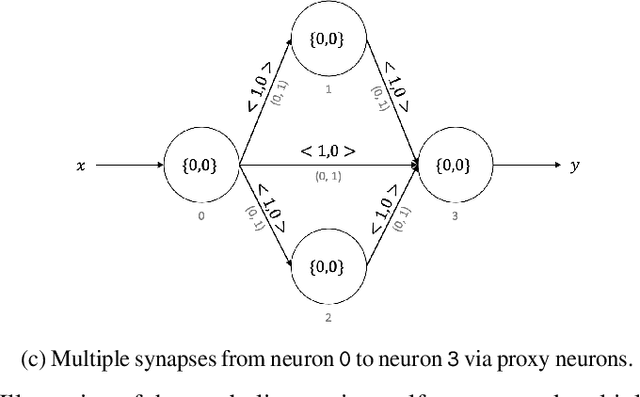
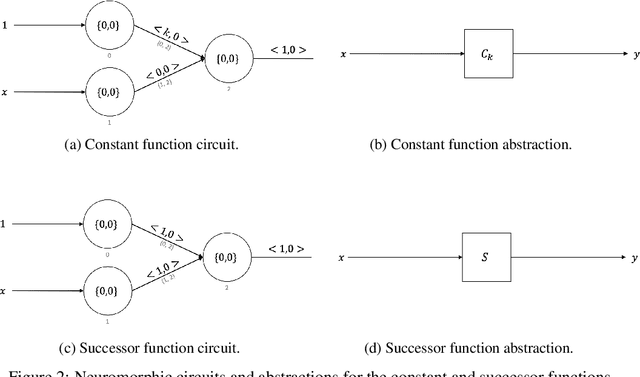
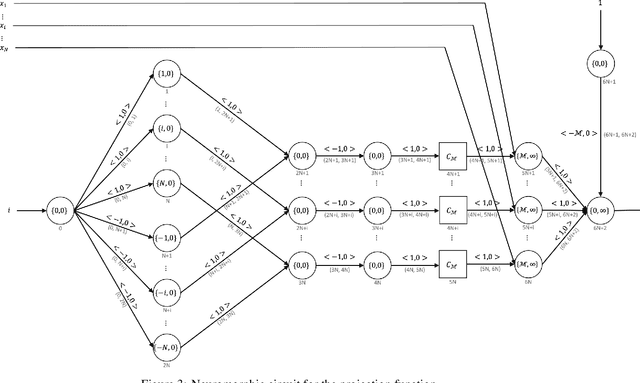
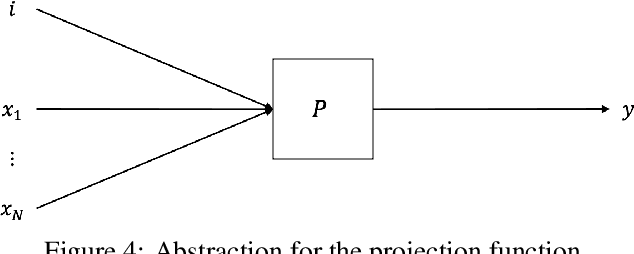
Abstract:Neuromorphic computing is a non-von Neumann computing paradigm that performs computation by emulating the human brain. Neuromorphic systems are extremely energy-efficient and known to consume thousands of times less power than CPUs and GPUs. They have the potential to drive critical use cases such as autonomous vehicles, edge computing and internet of things in the future. For this reason, they are sought to be an indispensable part of the future computing landscape. Neuromorphic systems are mainly used for spike-based machine learning applications, although there are some non-machine learning applications in graph theory, differential equations, and spike-based simulations. These applications suggest that neuromorphic computing might be capable of general-purpose computing. However, general-purpose computability of neuromorphic computing has not been established yet. In this work, we prove that neuromorphic computing is Turing-complete and therefore capable of general-purpose computing. Specifically, we present a model of neuromorphic computing, with just two neuron parameters (threshold and leak), and two synaptic parameters (weight and delay). We devise neuromorphic circuits for computing all the {\mu}-recursive functions (i.e., constant, successor and projection functions) and all the {\mu}-recursive operators (i.e., composition, primitive recursion and minimization operators). Given that the {\mu}-recursive functions and operators are precisely the ones that can be computed using a Turing machine, this work establishes the Turing-completeness of neuromorphic computing.
ROAD: The Real ORNL Automotive Dynamometer Controller Area Network Intrusion Detection Dataset (with a comprehensive CAN IDS dataset survey & guide)
Dec 29, 2020

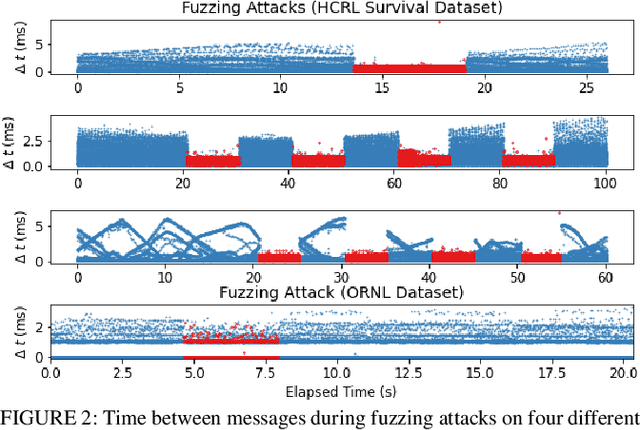
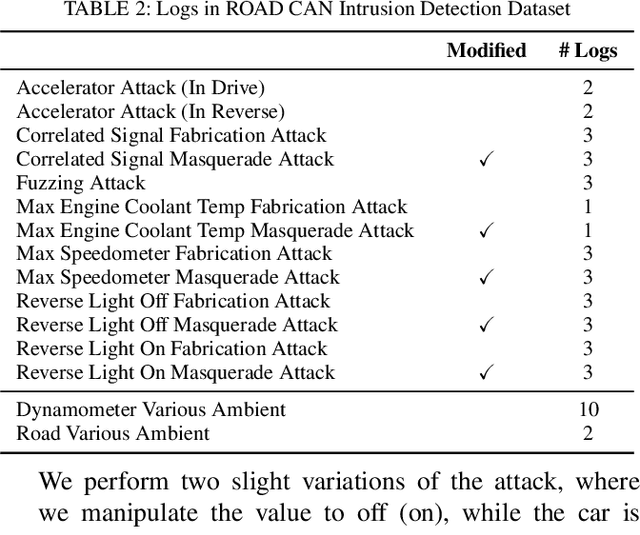
Abstract:The Controller Area Network (CAN) protocol is ubiquitous in modern vehicles, but the protocol lacks many important security properties, such as message authentication. To address these insecurities, a rapidly growing field of research has emerged that seeks to detect tampering, anomalies, or attacks on these networks; this field has developed a wide variety of novel approaches and algorithms to address these problems. One major impediment to the progression of this CAN anomaly detection and intrusion detection system (IDS) research area is the lack of high-fidelity datasets with realistic labeled attacks, without which it is difficult to evaluate, compare, and validate these proposed approaches. In this work we present the first comprehensive survey of publicly available CAN intrusion datasets. Based on a thorough analysis of the data and documentation, for each dataset we provide a detailed description and enumerate the drawbacks, benefits, and suggested use cases. Our analysis is aimed at guiding researchers in finding appropriate datasets for testing a CAN IDS. We present the Real ORNL Automotive Dynamometer (ROAD) CAN Intrusion Dataset, providing the first dataset with real, advanced attacks to the existing collection of open datasets.
Hyperparameter Optimization in Binary Communication Networks for Neuromorphic Deployment
Apr 21, 2020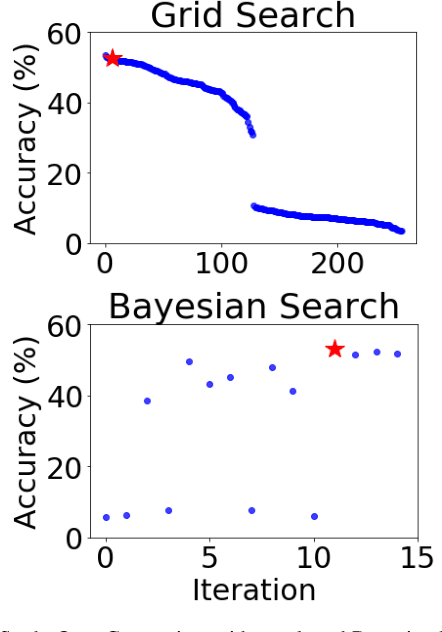
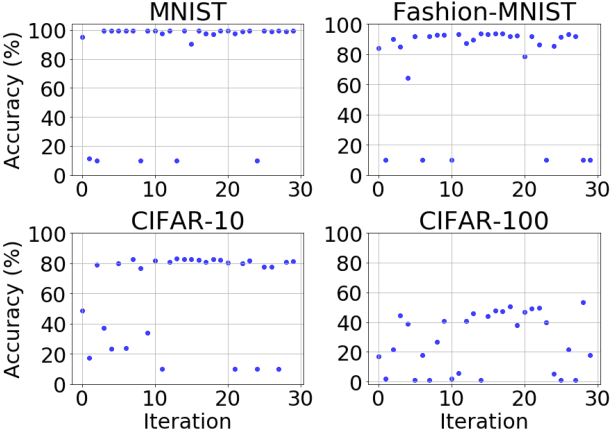
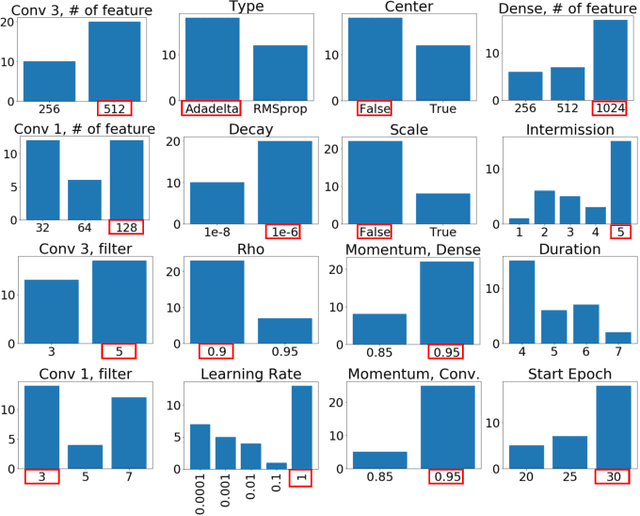
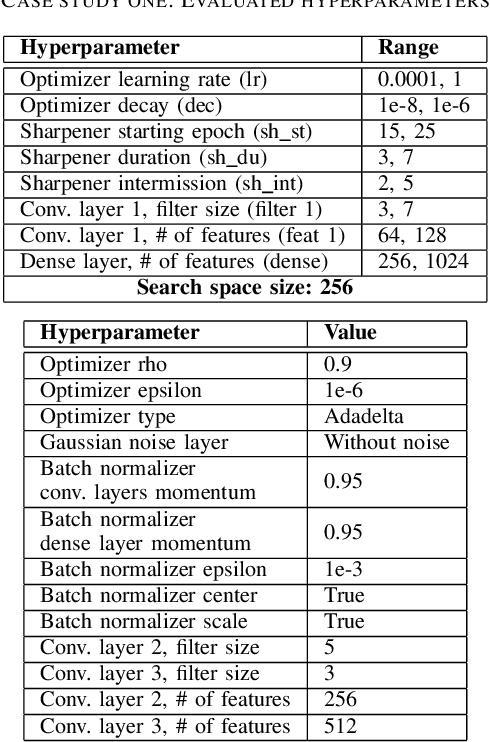
Abstract:Training neural networks for neuromorphic deployment is non-trivial. There have been a variety of approaches proposed to adapt back-propagation or back-propagation-like algorithms appropriate for training. Considering that these networks often have very different performance characteristics than traditional neural networks, it is often unclear how to set either the network topology or the hyperparameters to achieve optimal performance. In this work, we introduce a Bayesian approach for optimizing the hyperparameters of an algorithm for training binary communication networks that can be deployed to neuromorphic hardware. We show that by optimizing the hyperparameters on this algorithm for each dataset, we can achieve improvements in accuracy over the previous state-of-the-art for this algorithm on each dataset (by up to 15 percent). This jump in performance continues to emphasize the potential when converting traditional neural networks to binary communication applicable to neuromorphic hardware.
 Add to Chrome
Add to Chrome Add to Firefox
Add to Firefox Add to Edge
Add to Edge